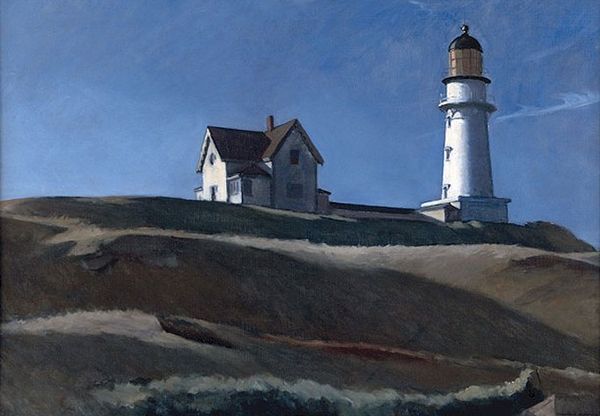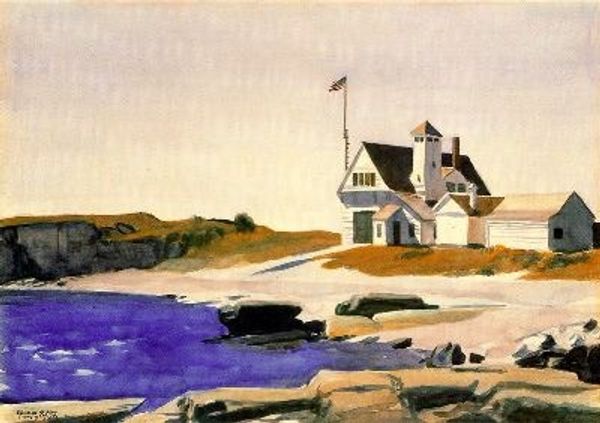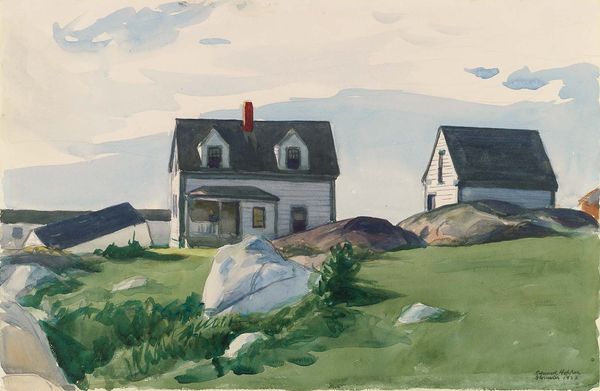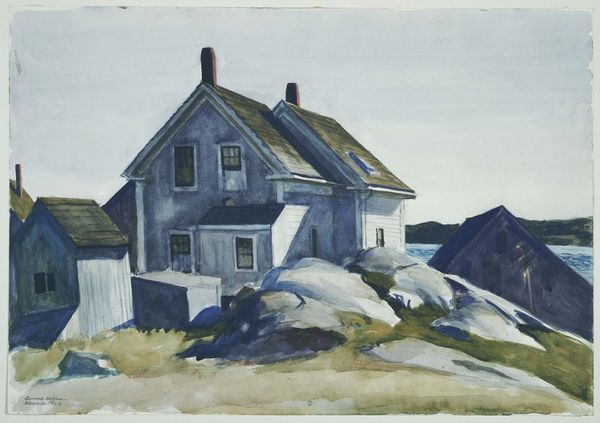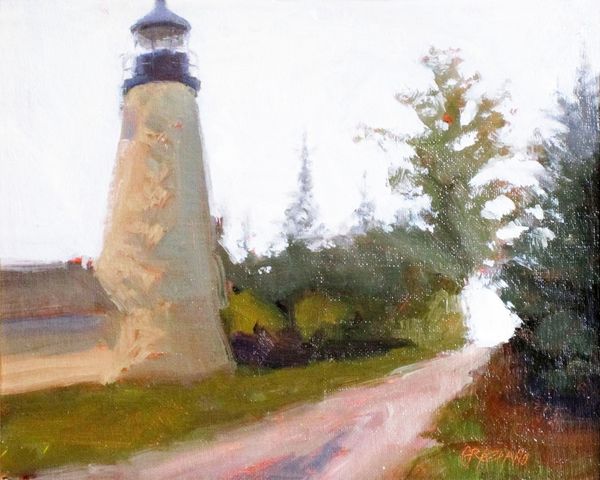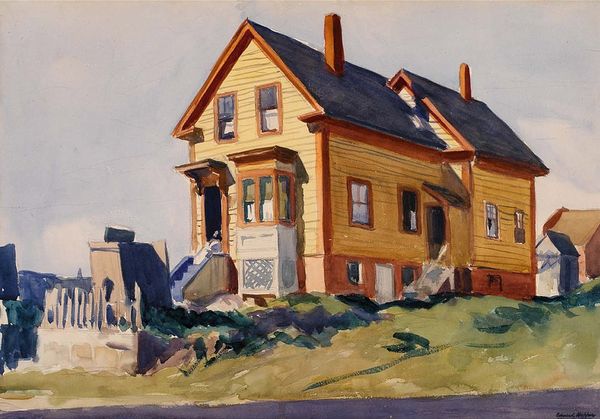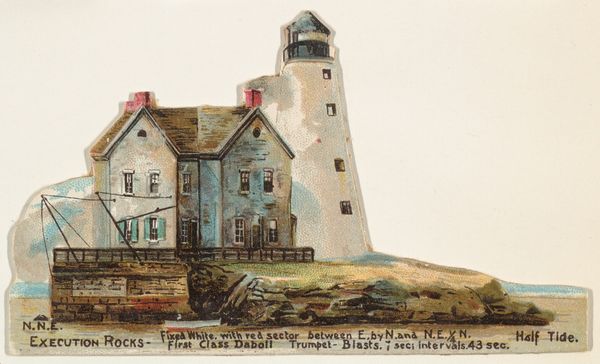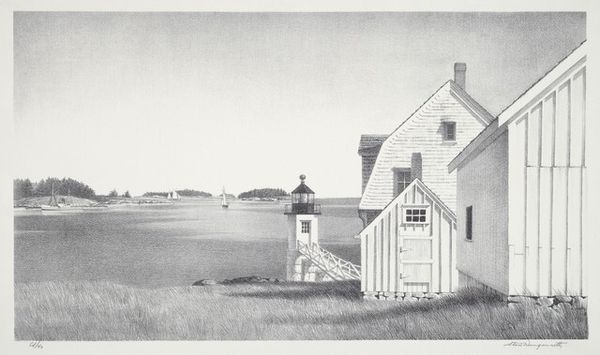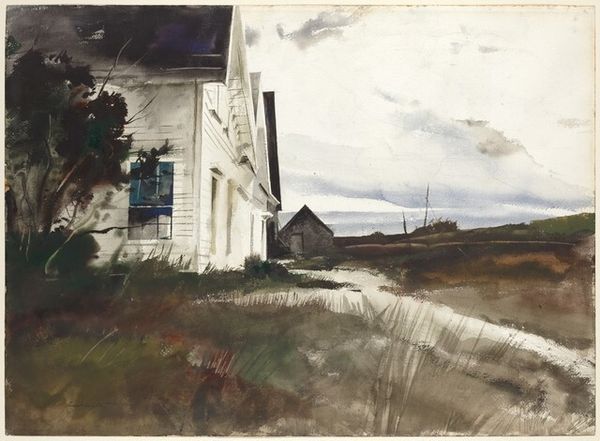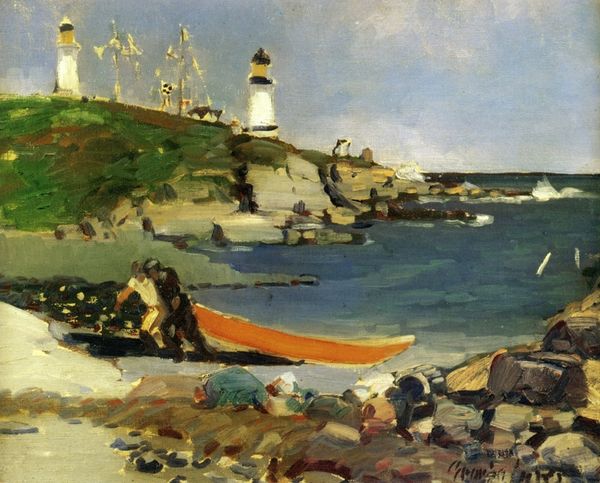
Lighthouse and Buildings, Portland Head, Cape Elizabeth, Maine 1927
0:00
0:00
edwardhopper
Museum of Fine Arts (MFA), Boston, MA, US
painting, watercolor
#
painting
#
landscape
#
oil painting
#
watercolor
#
cityscape
#
watercolour illustration
#
modernism
#
watercolor
#
building
Dimensions: 49.5 x 34.3 cm
Copyright: Edward Hopper,Fair Use
Editor: So, here we have Edward Hopper's "Lighthouse and Buildings, Portland Head, Cape Elizabeth, Maine," created in 1927. It looks like a watercolor. I'm struck by the almost harsh sunlight and the starkness of the buildings against the landscape. What do you see in this piece, particularly concerning its cultural significance at the time? Curator: Hopper often explores themes of isolation and modernity. The lighthouse, a symbol of guidance, feels somewhat disconnected here. Considering the era, the 1920s, a time of rapid industrialization and social change, this disconnection could be interpreted as commentary on the individual's place in a rapidly modernizing world. Where do you see evidence of that social tension, that transitional space between past and future, reflected in the composition itself? Editor: Well, the lighthouse is obviously a symbol of the past, while the buildings seem more contemporary. Perhaps the tension lies in their proximity, as though the modern world is encroaching upon traditional values and ways of life. It’s a bit ominous, maybe even critical of that encroachment. Curator: Exactly. The use of watercolor contributes to this feeling. Its inherent transparency allows for a sense of light and shadow play, but also suggests vulnerability, exposing the structures. Hopper frequently depicted American scenes with a detached gaze, inviting us to question progress and its effect on communities and identities. In a way, it mirrors anxieties about gender, class, and national identity present during the interwar period. How might the starkness, as you initially mentioned, reinforce this unsettling sentiment? Editor: The lack of human presence definitely emphasizes the loneliness. It makes the scene feel…abandoned almost, even with the buildings right there. And now that you mention gender roles... I am rethinking my whole reading now! Curator: Hopper provides space for these very reflections. Hopefully, exploring these tensions helps you better see the artwork's contribution to critical dialogue. Editor: Absolutely. I initially only noticed a pretty painting, but now I see layers of cultural critique. Thanks for sharing this different viewpoint.
Comments
No comments
Be the first to comment and join the conversation on the ultimate creative platform.
